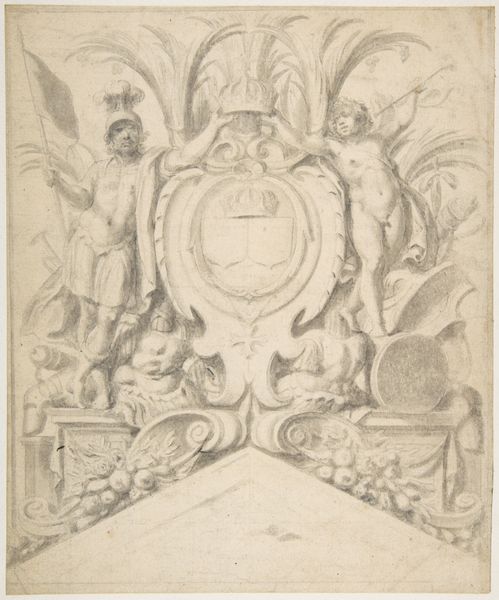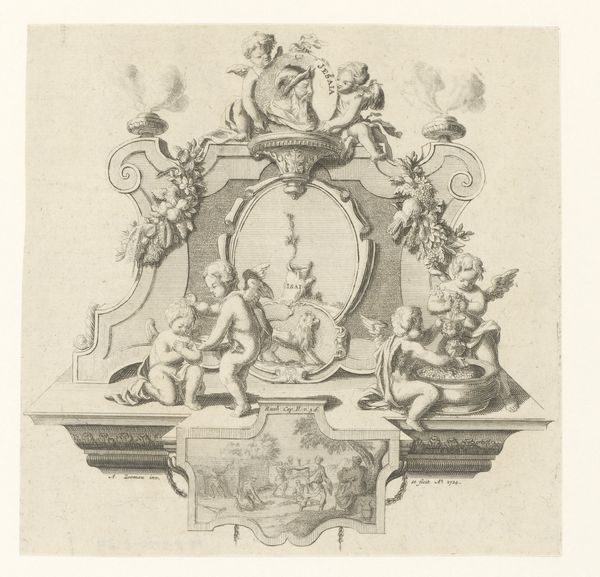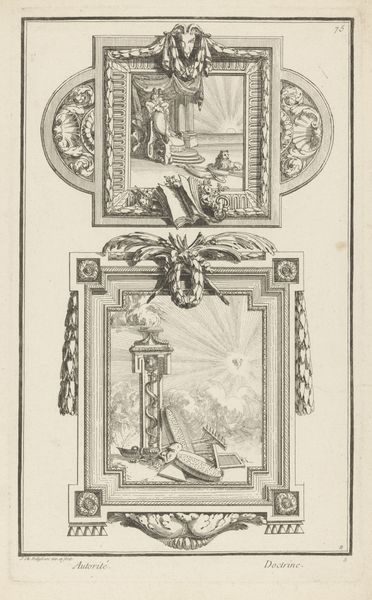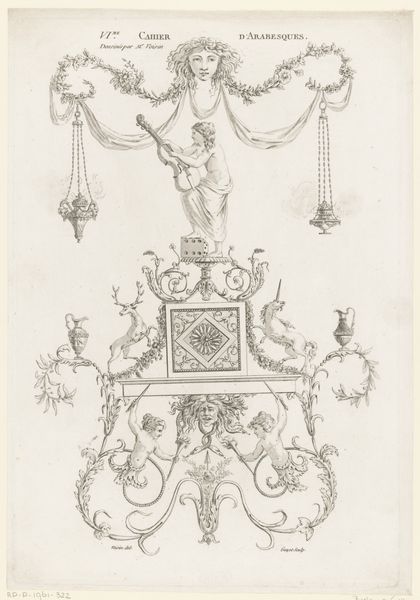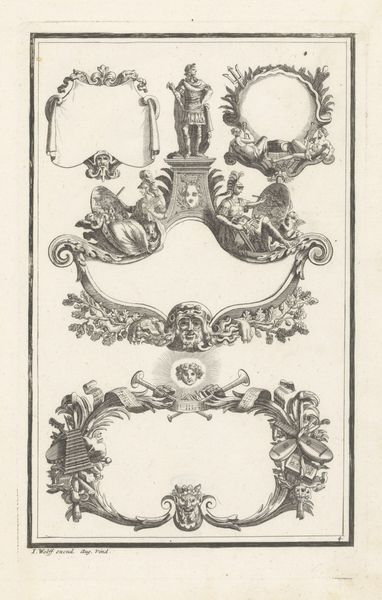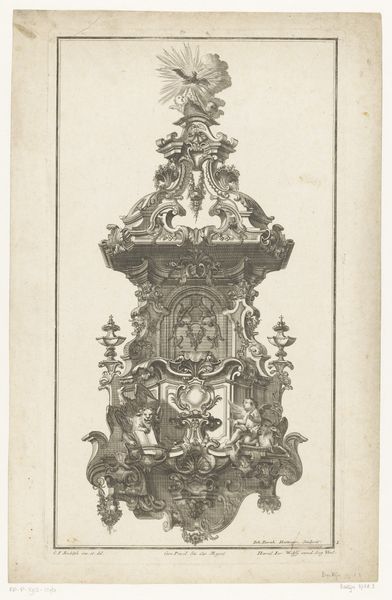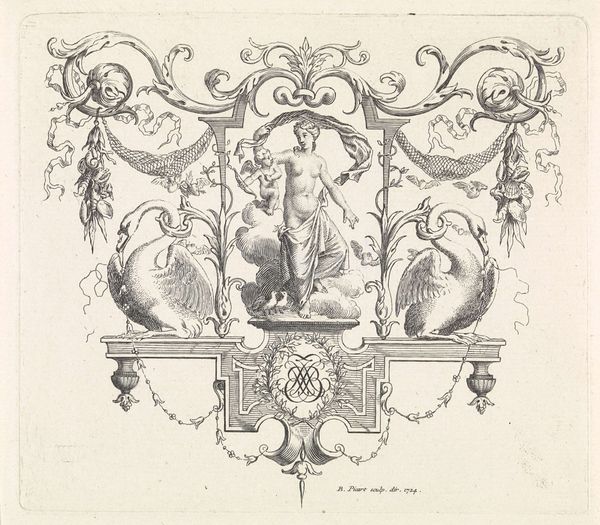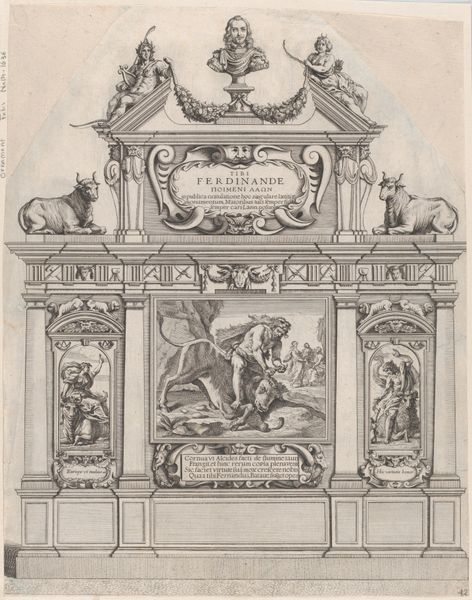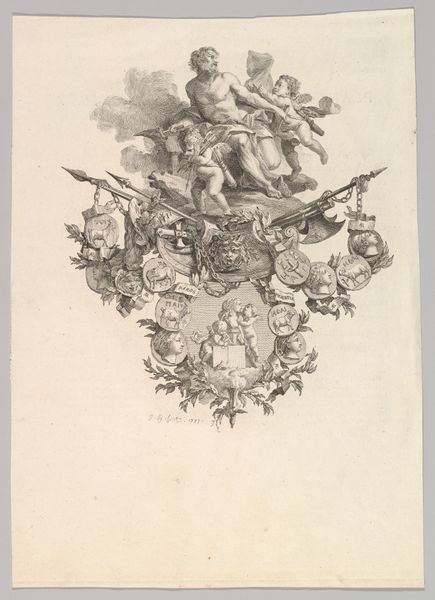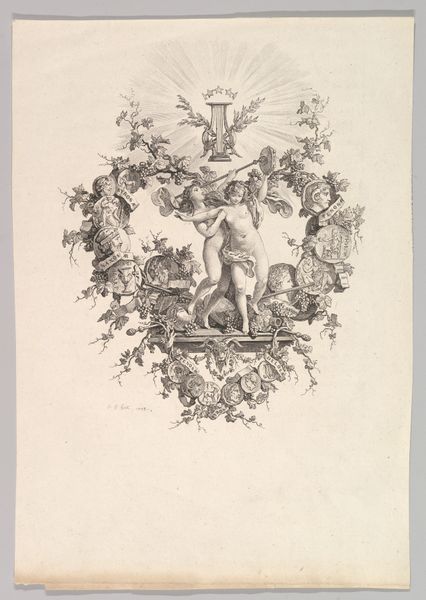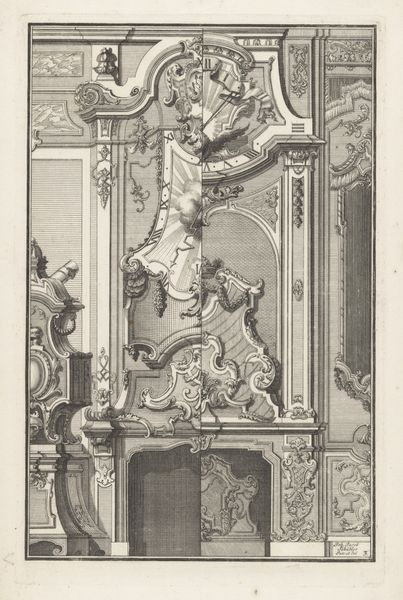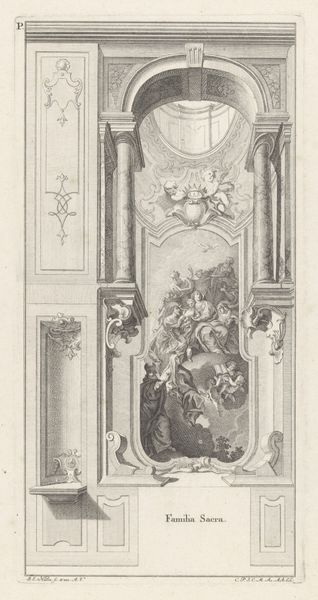
drawing, paper, ink
#
drawing
#
allegory
#
baroque
#
pen drawing
#
figuration
#
paper
#
ink
#
history-painting
Dimensions: 284 mm (height) x 214 mm (width) (bladmaal)
Marcus Tuscher created this drawing, "Allegory: The Victory of Truth over Envy and Lies", in the first half of the 18th century. At this time, allegories, like this one, were popular for conveying complex ideas through visual symbols. In this drawing, Tuscher uses classical imagery to explore the triumph of truth. We see the figure of Truth, shield in hand, vanquishing the figures of Envy and Lies. This was made during the Enlightenment, a period when reason and truth were highly valued. Artists often used allegory to express these values, creating works that commented on the intellectual and social climate of their time. Tuscher’s position as a court artist in Denmark also influenced his work. The Danish court, like many European courts, valued art that promoted virtue and order. To understand this work better, we can look into the iconography of allegorical figures and the philosophical debates of the Enlightenment. By examining the social and intellectual context, we can gain a richer understanding of its meaning and significance.
Comments
No comments
Be the first to comment and join the conversation on the ultimate creative platform.
